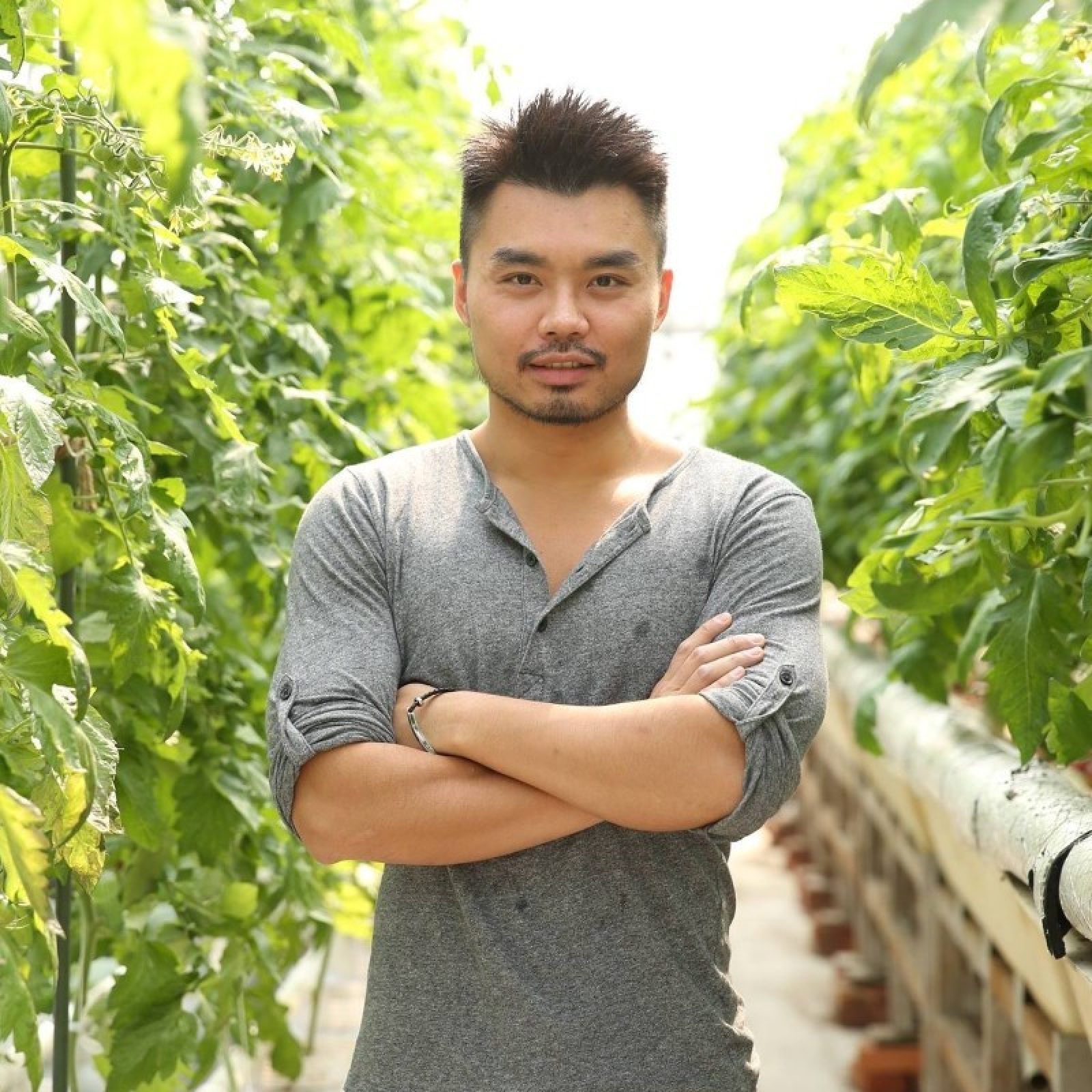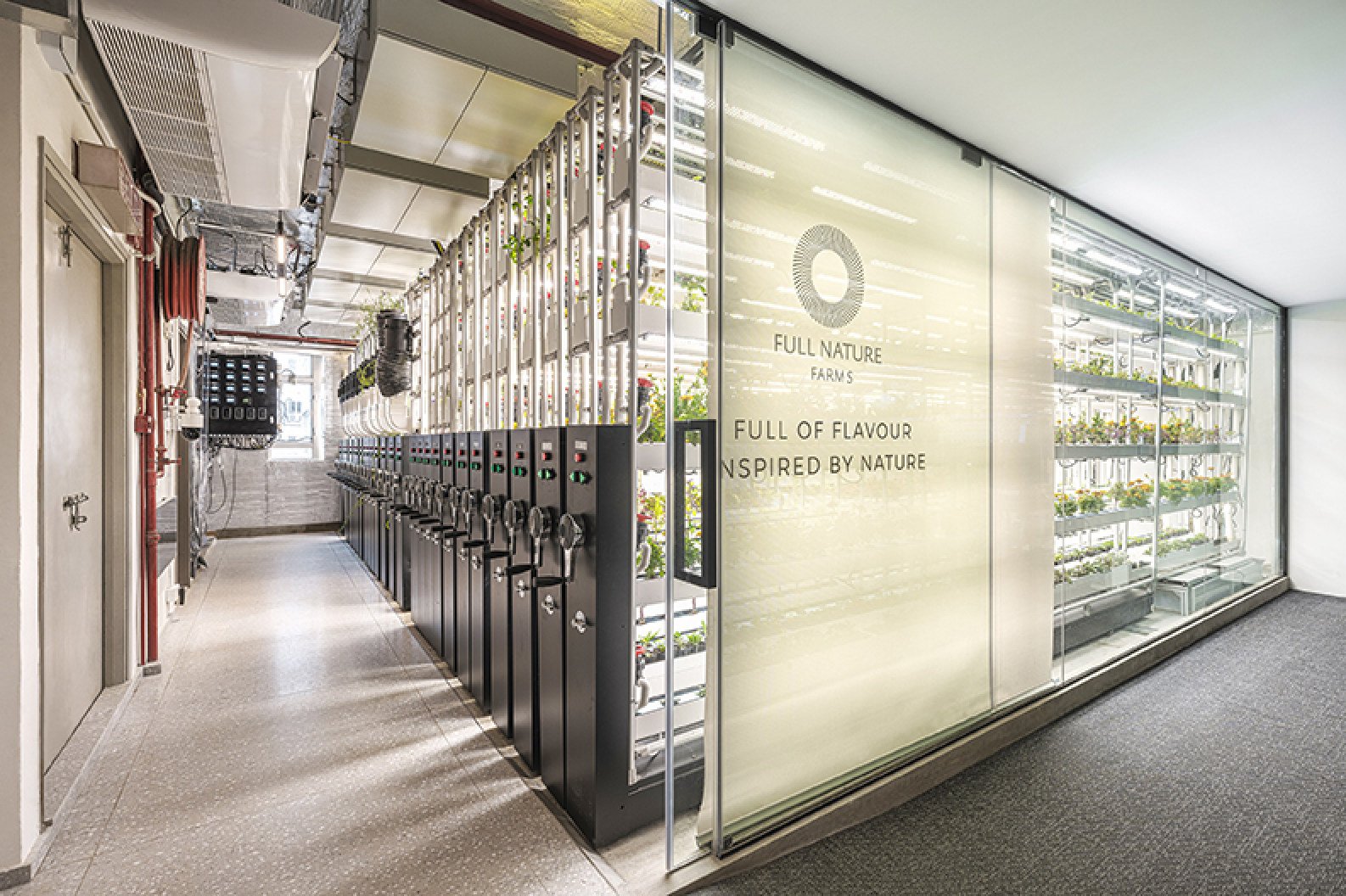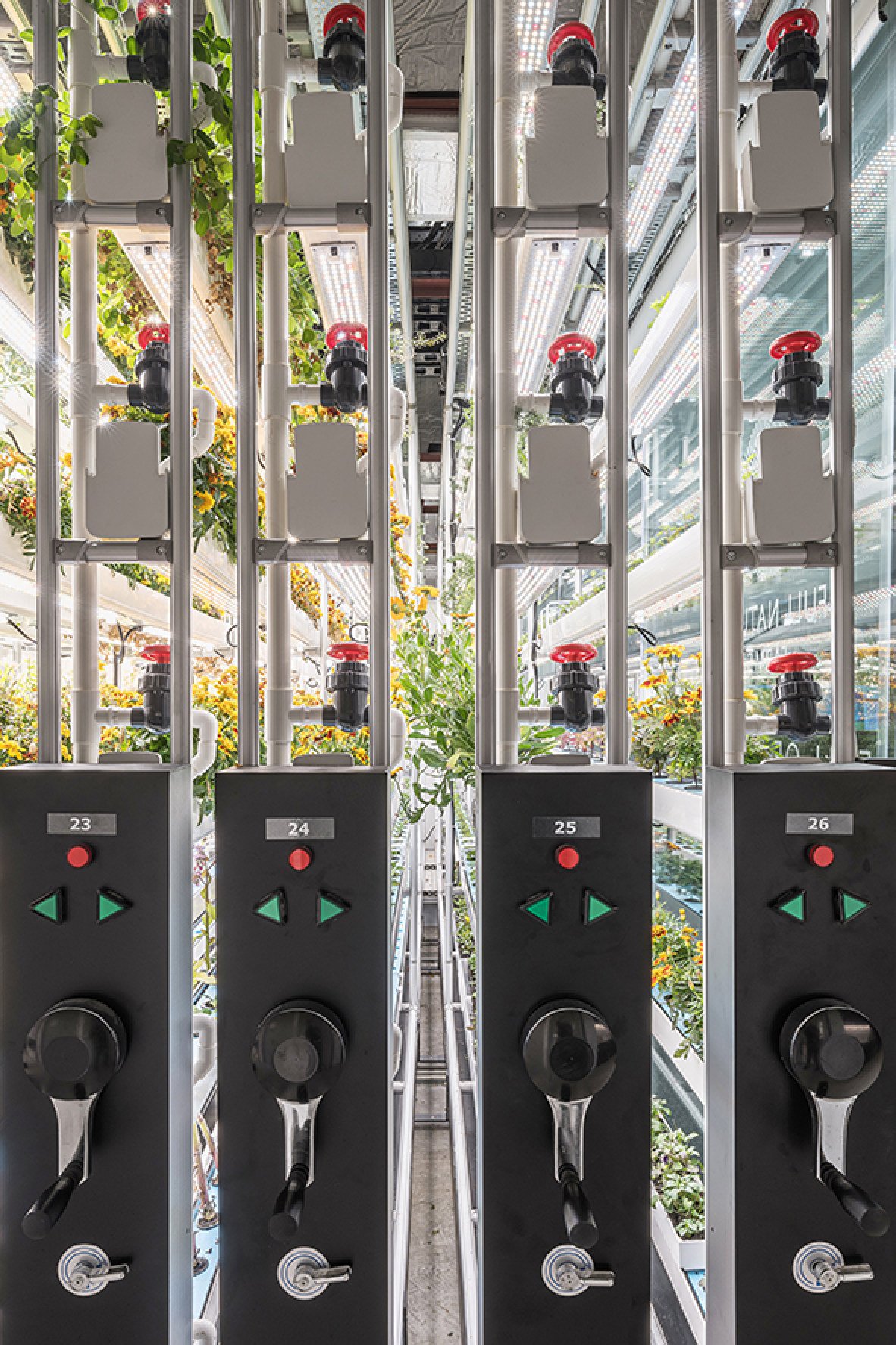
How a Hong Kong farm responded to climate change by growing greens sustainably indoors with the help of smart interior design – and without soil
- Ray Lok saw climate change as an issue after Typhoon Mangkhut wrecked his farm, so he moved his aquaponics operation indoors. But space was a problem
- Through efficient interior design paired with AI, Full Nature Farms is now thriving, and grows cheap, eco-friendly vegetables for various Hong Kong restaurants
When Typhoon Mangkhut slammed into Hong Kong in September 2018, Ray Lok knew he would need to start over.
At the time, he ran a 25,000 sq ft (2,320-square-metre) greenhouse in the city’s New Territories that supplied local restaurants and hotels with salad greens and other vegetables. It used a type of farming technique called aquaponics, in which water enriched by living fish (eating and producing waste) is fed hydroponically to plants in a closed-loop system.
“It was too expensive to repair,” says Lok. It dawned on him that, with climate change, these kinds of severe weather events would only become more common.

His farm had already been struggling for years to adapt to warming temperatures, with ever-hotter summers making it difficult to grow greens that needed cool nights to thrive.
So he decided to turn his back on the New Territories and relocate his farm to a 3,500-square-foot industrial space in the urban district of Kwai Tsing.
For rooftop gardeners, urban farming is a form of ecotherapy
“We needed something highly modular, automated, with full environmental control systems,” says Lok. “Going indoors was the most logical move for us.”
Four years and HK$5.5 million (US$700,000) later, his new operation is running at full tilt, with 35,000 pots of edible flowers and 3,000 trays of microgreens, such as arugula, coriander, watercress and carrots, many of which are destined for the kitchens of Hong Kong’s hotel restaurants.

When you cut out long-haul transport from food, not only do you reduce carbon emissions, you also reduce the cost for consumers.
It’s the kind of business equation that piqued Lok’s interest in farming in the first place. He grew up in a family that was involved in garment and plastics manufacturing.
“We made disposable utensils for McDonald’s and other restaurants,” he says. “I thought it was a dying industry.” He looked for alternatives and found one when he was at the supermarket one day, wondering why so many vegetables in Hong Kong were so expensive.

“It’s because they’re almost all imported. I thought, ‘Why don’t we grow some ourselves?’ It pretty much started out of curiosity,” he says.
He began the greenhouse in 2013 and, on moving his operations after Typhoon Mangkhut, opted to keep the same aquaponics system he had honed over the years.
Using energy-efficient water and air pumps that keep energy costs relatively low, the system recirculates water that is home to tilapia, a species of fish chosen because they can tolerate water with a relatively low pH level. Nitrifying bacteria convert fish waste into nitrates – in other words, plant food – so the water can be almost endlessly recycled.
It’s nice to be able to do something that is forward-thinking and good for the environment
But he needed help to make the transition, and so Lok turned to interior designers Justin Wolter and Christina Yu.
“We’re used to working in hospitality so this was definitely a first for us,” says Yu.
“As fun as doing restaurants and bars are, when you come across little gems like this, it’s hard to turn down,” adds Wolter.
They had a few challenges ahead of them. The biggest one was space: they needed to create an office for Lok’s company, Full Nature Farms, as well as making room for the farm itself, which would occupy just half of the total floor area.
Mushrooms grown in beer grains and old bread foster the circular economy
“If you’re using every inch you have, you can get a lot out of it,” says Wolter.
Together, the designers and Lok created a system of archival racks to house the plants.
“It’s using this library track system where you can crank it and move it and they are parked right up next to each other. That’s an incredibly efficient use of space,” says Wolter.

The growing area needed to be located on the edge of the industrial unit in order to be connected to water pipes, which meant the office space would be cut off from natural light.
To keep the space open and airy, Wolter and Yu installed glass partitions through which spills the artificial daylight of LED grow lamps. They also used folding glass doors to create a meeting room within the office area that can be opened or closed as needed.
The urban myth of organic food
Large computer monitors dominate the workspace. They’re essential for keeping track of the growing operation, most of which is automated and controlled by artificial intelligence.
“We have over 300 sensors,” says Lok. That’s key to keeping the operation as efficient as possible, right down to recycling any water that evaporates from the plants. “We have to grow as much produce as we can because we have to keep the company profitable.”
It’s going well enough that Lok has plans to expand his operation to a 10,000 sq ft space sometime next year. Wolter and Yu are already thinking of the possibilities this could entail, like installing automated, motorised racks that don’t need to be hand-cranked.
“It’s nice to be able to do something that is forward-thinking and good for the environment,” says Wolter.

